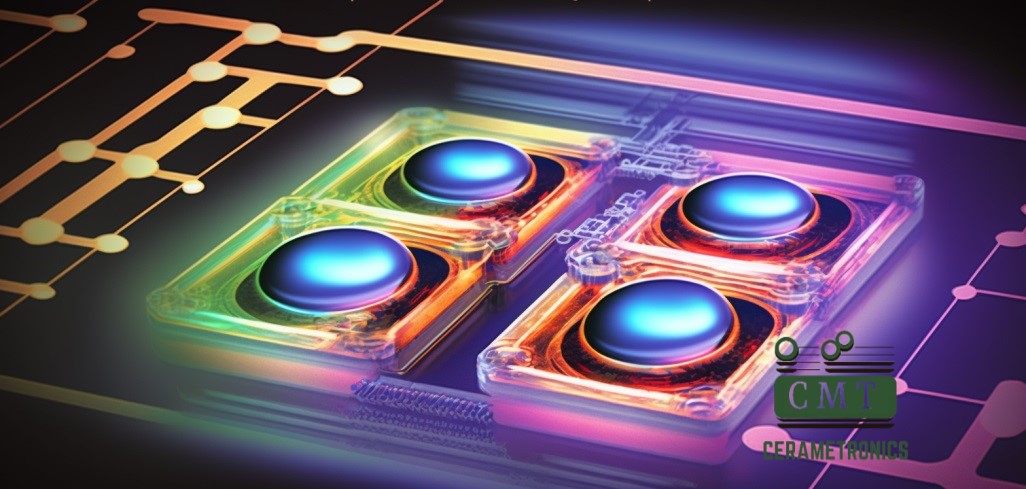High-Power LED
Improved Heat Dissipation and Stability with Metalized Ceramics, Ceramic Substrates, and Braze Solutions
High-power LED technology has revolutionized the lighting industry by offering brighter and more energy-efficient lighting solutions. However, with higher power comes higher heat generation, which can compromise the performance and longevity of the LED. To address this issue, the use of metalized ceramics and ceramic substrates with braze solutions has become increasingly popular in high-power LED applications.
Metalized ceramics are ceramic materials that have been coated with a conductive metal layer, typically through a process called metallization. This metal layer provides a conductive surface that can be used to attach electronic components such as LEDs, photodiodes, and laser diodes. The most commonly used metals for metallization are silver, gold, platinum, and palladium. By using metalized ceramics, the LED’s heat can be efficiently dissipated through the substrate, resulting in improved thermal performance and stability.
Ceramic Substrates
Ceramic substrates are also essential components of high-power LED technology, providing a thermally conductive and mechanically stable base for the LED components. Ceramic substrates with metalized layers offer excellent thermal conductivity and mechanical strength, allowing for high power density designs. Additionally, ceramic substrates are highly reliable, with excellent resistance to thermal and mechanical stress.

Braze Solutions
Braze solutions are another important component in high-power LED technology. Brazing is a joining process that uses a filler material, typically a metal alloy, to bond two or more materials together. In high-power LED applications, braze solutions are used to join the metalized ceramic substrate to the LED components, such as the LED chip and lead frame. The braze material acts as a thermal bridge, improving the heat transfer between the LED components and the substrate.
In high-power LED applications, the combination of metalized ceramics, ceramic substrates, and braze solutions offers several benefits. First, these materials provide high thermal conductivity, allowing for efficient heat dissipation from the LED components. This results in improved thermal performance and stability, leading to longer LED lifespan and better reliability. Second, the electrical insulation properties of ceramics ensure the LED’s safe operation at high voltages. Finally, the dimensional stability of ceramics ensures precise and stable optical alignment, leading to better lighting performance.
The use of metalized ceramics, ceramic substrates, and braze solutions has enabled the development of high-power LED lighting solutions that are more efficient, reliable, and cost-effective. These materials are used in a wide range of applications, from commercial and residential lighting to automotive and industrial lighting.
In summary, the use of metalized ceramics, ceramic substrates, and braze solutions has become essential for high-power LED applications, ensuring improved heat dissipation, stability, and efficiency. As the demand for brighter and more energy-efficient lighting solutions continues to grow, these materials are likely to play an even more critical role in the future of LED technology.

